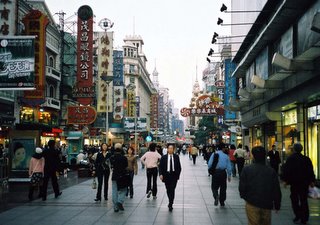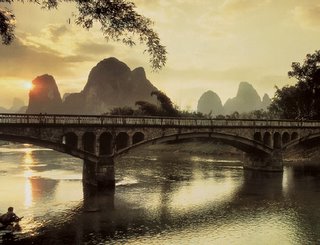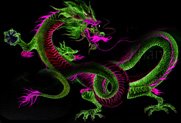Xi Shi the First of Four Beauties
 Xi Shi was a legendary beauty of the Spring and Autumn period (770-476 B.C.) in ancient China, Xi Shi was the first name of Four Beauties of China. All the stories that we heard about Xi Shi always in the positive way because of her clever and extraordinary beautiful and also her loyalist of the province.
Xi Shi was a legendary beauty of the Spring and Autumn period (770-476 B.C.) in ancient China, Xi Shi was the first name of Four Beauties of China. All the stories that we heard about Xi Shi always in the positive way because of her clever and extraordinary beautiful and also her loyalist of the province.Xi Shi and a legendary beauty
One of Chinese folktale told that one day Xi Shi had a angina pectoris so she put her hand at her breast and knitted her brow then one ugly girl from the east village saw and thought that Xi Shi was very beautiful because of doing that so she did imitate Xi Shi, anyhow people saw that ugly girl did that all ran away from her. The fact was Xi Shi was very beautiful even doing that but that ugly girl didn't know the reason of Xi Shi's beauty.Xi Shi had equally charming in both heavy and light makeup, slim or plump, fully dressed or naked, her exquisite features took beholders' breath away.
"An apperance of Xi Shi that would sink the most beautiful fish".
Background of 'Xi Shi'
Some Said that Xi Shi was Tai People, once her mom who was a very beautiful lady went to the river and played with the goldfish, it brought hyacinth and blew it into her mouth, she was so frighten then after that not so long she gestated and gave birth "Xi Shi".Nationalist Lady 'Xi Shi'
In the ancient time Fu Chai, the governor of Yue province asked his nobleman "Fan Li" to seek for the most beautiful lady in the province to be the spy in Wu Province then in that time Fan Li got 2 ladies who were considered as the most beautiful ladies of province one of them was Xi Shi.She was trained about every manners, arts, musical instrument and also martial art by Fan Li to be the most perfect lady of province, Fan Li taught Xi Shi to be nationalist and he'd got success, Xi Shi is a real nationalist lady, she could die for Yue province.
After that 3 years Xi Shi and another beautiful lady were sent to Wu Province to be the concubine of Fu Chai, the governor of Wu province. Fu Chai felt in love with Xi Shi at first sight as she was extraordinary beautiful, Fu Chai trust Xi Shi and never had doubt at all that Xi Shi was just a spy who came to destroy his province. For another girl as she thought that Xi Shi was more beautiful than her and Fu Chai also loves Xi Shi not her so she felt so sorry and finally died in the palace of Fu Chai in Wu province.
In the period of time that Xi Shi was in Wu province, Fu Chai never concentrated on the provinces' stuff and the court at all so that the corruptions could found everywhere; it's all because of Xi Shi's strategies.
The great military strategist "Sun Wu" or Sun Zi in the ancient Chinese history also had to back away from Xi Shi way because he could not see the way to knock her out from the court in the period of Emperor Fu Chai of Wu Province as she went there to be the spy for Emperor Fu Chai of Yue Province.
After few years Gou Jian made a war with Wu province and finally won the war then Fan Li took Xi Shi back and married her then two of them ran away to other place and lived happily until the last breath.











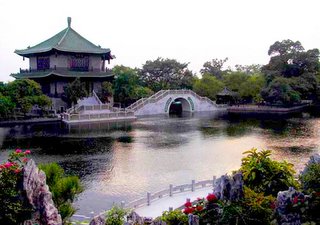 Baomo Garden is located in Zini Village, Shawan Town, Panyu City in Guagdong Province. This garden was built in the end of Qing Dynasty which was the early days of the Republic of China, but it was destroyed in the 20th century then it took 6 years to renovate Baomo Garden since 1995.
Baomo Garden is located in Zini Village, Shawan Town, Panyu City in Guagdong Province. This garden was built in the end of Qing Dynasty which was the early days of the Republic of China, but it was destroyed in the 20th century then it took 6 years to renovate Baomo Garden since 1995.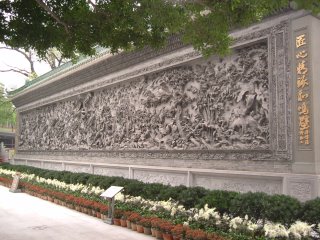
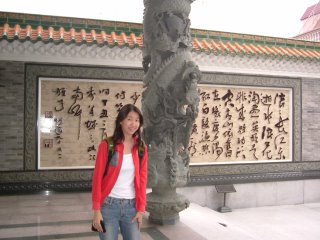 Zhao Tailai one of the donors is a British-Chinese collector, he had visited Baomo Garden in 1998 and as his great interested in the works of art there. He donated one piece of work of art which has become the most precious among the collected item in Baomo Garden now that’s a work of calligraphy by Chinese Emperor Qianlong of the Qing Dynasty (1644 – 1911 the last dynasty of China). Zhao also donated another 1,000 relics dating from the spring and autumn period (770 – 746 B.C.) through the Qing Dynasty.
Zhao Tailai one of the donors is a British-Chinese collector, he had visited Baomo Garden in 1998 and as his great interested in the works of art there. He donated one piece of work of art which has become the most precious among the collected item in Baomo Garden now that’s a work of calligraphy by Chinese Emperor Qianlong of the Qing Dynasty (1644 – 1911 the last dynasty of China). Zhao also donated another 1,000 relics dating from the spring and autumn period (770 – 746 B.C.) through the Qing Dynasty.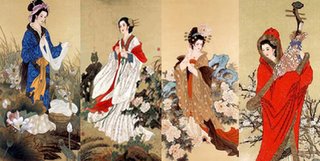 The Image from left to right : Xi Shi, Diao Chan, Yang Guifei and Wang Zhaojun
The Image from left to right : Xi Shi, Diao Chan, Yang Guifei and Wang Zhaojun Shanghai's school of cuisine" is one of the most famous Chinese cuisine's school of China, Shanghai's school of cuisine consists of 6 parts which are
Shanghai's school of cuisine" is one of the most famous Chinese cuisine's school of China, Shanghai's school of cuisine consists of 6 parts which are 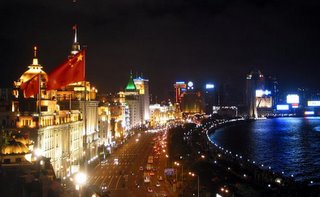 There a thousand things to shop in Shanghai, the modern shopping city of China where well-known as the
There a thousand things to shop in Shanghai, the modern shopping city of China where well-known as the 